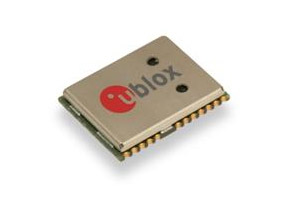M2M and IOT communications expert Alpha Micro Components has launched the NEO-M8T and LEA-M8T precision timing modules, ideal for mission-critical infrastructure systems including mobile communication networks, power generation and distribution systems and seismic measurements. Highly compact, these new surface-mount modules are able to generate a precise reference clock with <20 ns accuracy.
The receivers offer high sensitivity (-157 dBm signal acquisition with assisted GNSS) to enable quick start-up, even inside structures with limited sky-view. The precise reference clock is derived from multi-GNSS (Global Navigation Satellite Systems) including GPS, GLONASS, and BeiDou.
The LEA-M8T module is footprint compatible with existing LEA-5T/6T designs, facilitating easy upgrade. The NEO-M8T is optimised for timing applications requiring low power consumption and long battery life, such as geophones used for seismic field measurements. The modules meet stringent requirements for reliability, accuracy and low power consumption.
“These new modules are the industry’s highest performance GNSS timing modules in terms of accuracy, reliability and power consumption,” said Thomas Nigg, vice president of product marketing at u-blox.
The NEO and LEA-M8T modules are multi-GNSS, pin compatible successors to u-blox’ existing PPS timing modules and complements the previously announced GNSS disciplined frequency reference module, LEA-M8F.
Measuring only 12.2 x 16.0 mm (NEO-M8T) and 17.0 x 22.4 mm (LEA-M8T), the modules deliver high integrity and reliability with RAIM (Receiver Autonomous Integrity Monitoring) and alarms, which are crucial features for extremely reliable operation. Two time-pulse outputs are available, configurable from once per minute up to 10 MHz. The modules also output multi-GNSS RAW data, including carrier phase, code phase and pseudo-ranges.
The modules can deliver time according to any international standard, including calibration of interconstellation offsets. Survey-in and single satellite timing features increase timing accuracy and timing availability with as few as one single satellite in view. Support for low duty cycle operation reduces power consumption for battery-powered applications which results in cost savings as smaller batteries can be used.
Commenting on the NEO-M8T, Tim Bonnett, director and chief sales officer, Alpha Micro Components, said, “The M8T timing modules are delivered in u-blox’ established LEA and NEO form-factors with standardised pin-out, allowing ready migration from previous product generations. u-blox timing products can make optional use of u-blox AssistNow or industry standard aiding data. This reduces the time to first fix and delivers exceptional acquisition sensitivity, even on first installation before precise location or time is known.”










